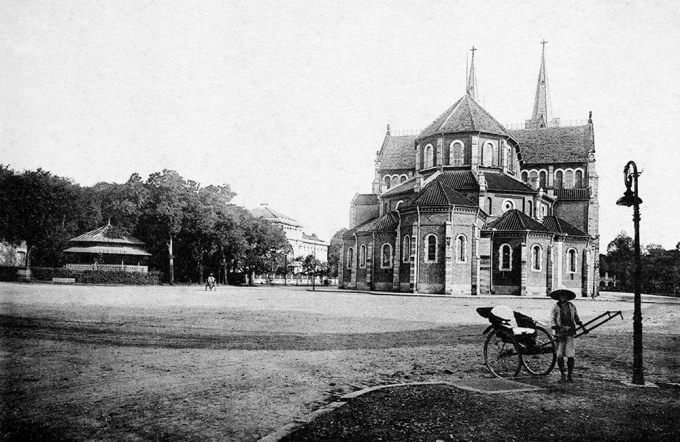Edition: International | Vietnamese
© Copyright 1997 VnExpress.net. All rights reserved.
 |
|
Locally published "Indo-Chine Pittoresque & Monumentale: Annam – Tonkin" book includes a collection of photos taken by different French photographers, including Dieulefils. These images serve to expose Vietnamese culture during the French colonial period and can be dated back to 1885. |
 |
|
Northern Vietnamese women in the late 19th century would typically wear traditional "ao dai " and big "quai thao" hats (L). |
 |
|
Four officials of the Nguyen Dynasty in the 19th century wear "ao dai" in Hue Imperial Citadel. The "ao dai" of the Nguyen Dynasty had patterns and designs strictly regulated by the government. The top layer was embroidered with designs depicting the phoenix, bat, and sun with a silk layer beneath. |
 |
|
Eunuchs served under the Nguyen Dynasty, Vietnam's last royals. After careful selection, baby eunuchs were brought to the palace to learn proper walking, dressing and other disciplines from seniors. Many arrived aged 7 and remained at the palace until they were old. |
 |
|
A troop of royal servants, with some carrying umbrellas and fans. |
 |
|
Performers of a folk theater troupe in Saigon. These entertainers often traveled the southern Mekong Delta region to perform. |
 |
|
Warriors of the Thuong ethnic community of the central and southern regions. |
 |
|
A gate of Van Mieu Quoc Tu Giam, or Temple of Literature, in Hanoi at the end of the 19th century. |
 |
|
A corner of Hanoi's Sword Lake. |
 |
|
The courtyard of Thai Hoa Palace at Hue Imperial Citadel where Nguyen kings and functionaries once convened for political debate. |
 |
|
A view of the old Saigon Notre Dame Cathedral. The cathedral did not have two bell towers when inaugurated in 1880. They were later added in 1985, to include a total of six large bronze bells, with two crosses at the top, 60.5 m above ground. |
 |
|
Pierre Dieulefils was born in Malestroit Village in the Bretagne region of France in 1862. He joined the army in 1883 and was later assigned to Indochina in 1885. |
Photos by Pierre Dieulefils